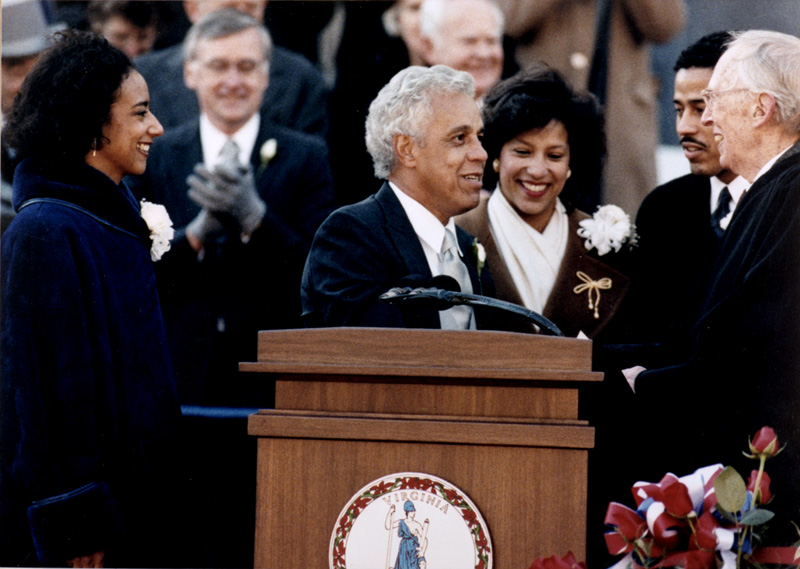
| Did You Know? The Governor of Virginia is not allowed to serve consecutive terms. An individual is, however, eligible to serve as governor again after being out of office for four years. To learn more about Virginia’s governors click here. |
Virginia’s governor is unique among all of the states because the Commonwealth’s chief executive is the only one prohibited by its Constitution from running for re-election. The governor can sit out at least four years after leaving office and serve one more term later, but Mills Godwin is the only governor since the Civil War to actually do this—elected first as a Democrat in 1965 and then for a second term as a Republican in 1973.Because Virginia’s governors cannot succeed themselves to continue advancing their goals unabated, they hit the ground running the day after they have won the gubernatorial election through the transition period from one administration to the next. Once they take the oath of office in January, the General Assembly session is already underway, so they must work quickly if they want to get any legislative initiatives passed that year. Governors realize that they have only three short years remaining after that, and they need to rely on their close advisors and cabinets to help them achieve their priorities. (Morgan & Giesen, Jr., p. 112)

| Did You Know? The U.S. Constitution prohibits all titles of nobility. However, the Commonwealth’s choice of language in referring to the governor as “His / Her Excellency,” which may well be the result of her colonial history and ties to England, has a distinctly noble air about it. While the Commonwealth is not the only state to use this title, most states in the U.S. refer to their governor as “The Honorable” (which Virginia also does to describe all elected officials). |
| Item | Governor of Virginia | President of the United States |
|---|---|---|
| Qualifications |
At least 30 years of age. Resident and registered voter in the Commonwealth for five years prior to election. |
At least 35 years of age. Natural born citizen. Permanent resident of the U.S. for at least 14 years. |
| Term |
Four years. Cannot serve consecutive terms. |
Four years. Can be elected twice and serve a maximum of ten years (if he has assumed the presidency following the death or resignation of the President). |
| Did You Know? The Governor of Virginia has the power of line-item veto, which allows the governor to veto certain parts of a bill and the state budget. Virginia is one of many states that allows the governor use of this tool. The President of the United States does not have this power as it has been ruled unconstitutional at the federal level. |
| Did You Know? Virginia’s lieutenant governor succeeds the governor in the event of a vacancy. Virginia’s lieutenant governor is elected separately from the governor. This can result in a governor and lieutenant governor being from different parties. |
Long considered the behind-the-scenes offices that simply represent their states in legal disputes, state attorneys general are quickly becoming some of the most powerful state officials--as illustrated by many national headlines. It started with the tobacco lawsuits initiated by attorneys general in 1998 that ultimately brought record dollars to state coffers. Building upon that lawsuit, attorneys general have targeted and regulated financial institutions, tire manufacturers, telemarketers, pharmaceutical companies, lending organizations, credit card companies, accounting firms, and investors, among others. (Kilgore & Nolen, 2012, p. 155)
| Did You Know? Virginia governors have operated using cabinets since 1972. In the Virginia cabinet, a relatively small number of “secretaries” are nominated by the governor and confirmed by the General Assembly to oversee broad policy areas such as education and health. Cabinet members both advise the governor and oversee all departments and agencies in their particular secretariat. Interested in examining the structure and functions of the governor’s cabinet? Then click here. |